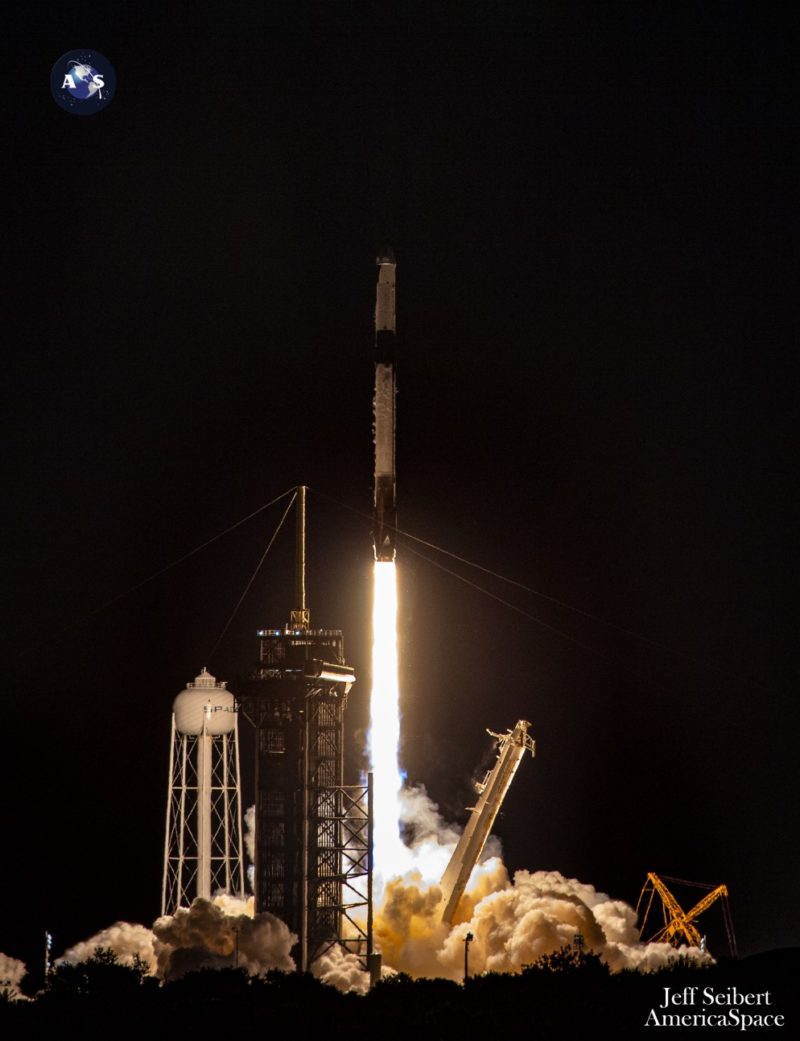
SpaceX has successfully launched its 30th Falcon 9 of the year, as the Hawthorne, Calif.-headquartered organization inches ever closer to breaking its “personal best” of 31 missions achieved in 2021. The five-times-flown B1067 booster rose into the darkness from historic Pad 39A at the Kennedy Space Center (KSC) in Florida at 8:44 p.m. EDT Thursday, kicking off the month-long CRS-25 Cargo Dragon mission to the International Space Station (ISS). The cargo ship, laden with 5,800 pounds (2,600 kilograms) of equipment, payloads and crew supplies, will autonomously dock at the forward-facing port of the station’s Harmony node at about 11:20 a.m. EDT Saturday.
Thirty missions in 2022’s first seven months is an astounding accomplishment, executed using only ten Falcon 9 cores, four of which have logged four flights apiece since January. Numerous records have been established, including the first boosters to log 12th and 13th launches, the first former Falcon Heavy side-booster to refly as a “single-stick” Falcon 9 and the shortest interval—just 21 days—between missions by the same booster.
Tonight’s CRS-25 mission was meant to fly more than a month ago. Originally slated to launch on 9 June, it was postponed until at least month’s end in response to elevated monomethyl hydrazine vapor readings in the cargo ship’s Draco thruster system. In response to this issue, propellant and oxidizer were promptly offloaded from the affected region of the spacecraft to permit deeper investigation and testing.
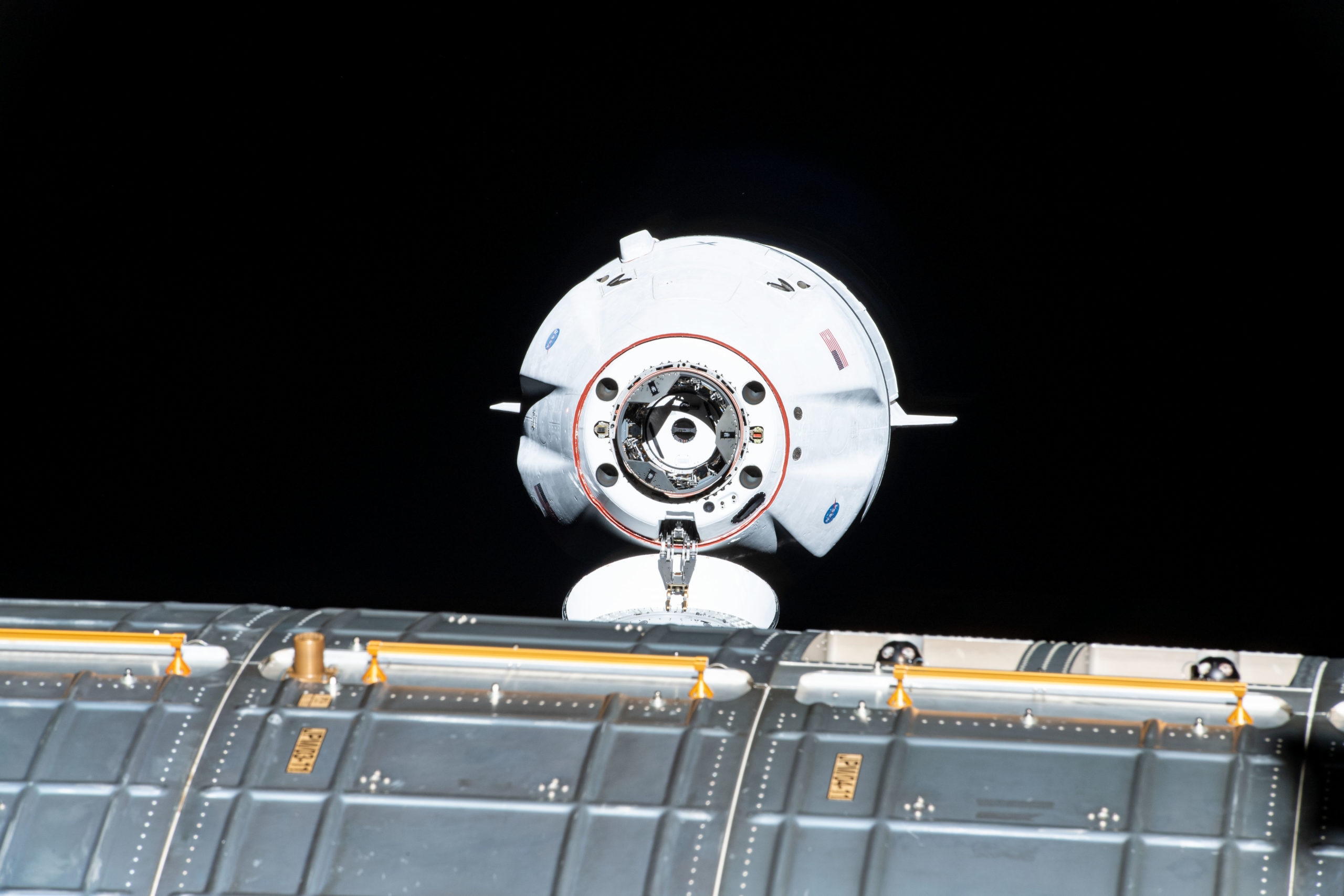
The source was ultimately narrowed to imperfections within a Draco thruster valve inlet joint, which was removed and replaced and launch rescheduled for No Earlier Than (NET) 11 July. That NET date was later shifted a few more days to the right, to Thursday, 14 July, to support continued inspections of the Cargo Dragon and the repair of components potentially degraded by the monomethyl hydrazine vapor.
SpaceX teams also replaced the cargo ship’s main parachutes as a precautionary measure. However, in comments made during Wednesday’s CRS-25 pre-launch news conference, SpaceX Senior Director of Human Spaceflight Programs Benji Reed pointed out that the original parachutes, now fully inspected, “look great” and will be pressed back into service on a future mission. He added that the problem which stopped CRS-25 in its tracks for a month was “not a fleet-wide issue”.
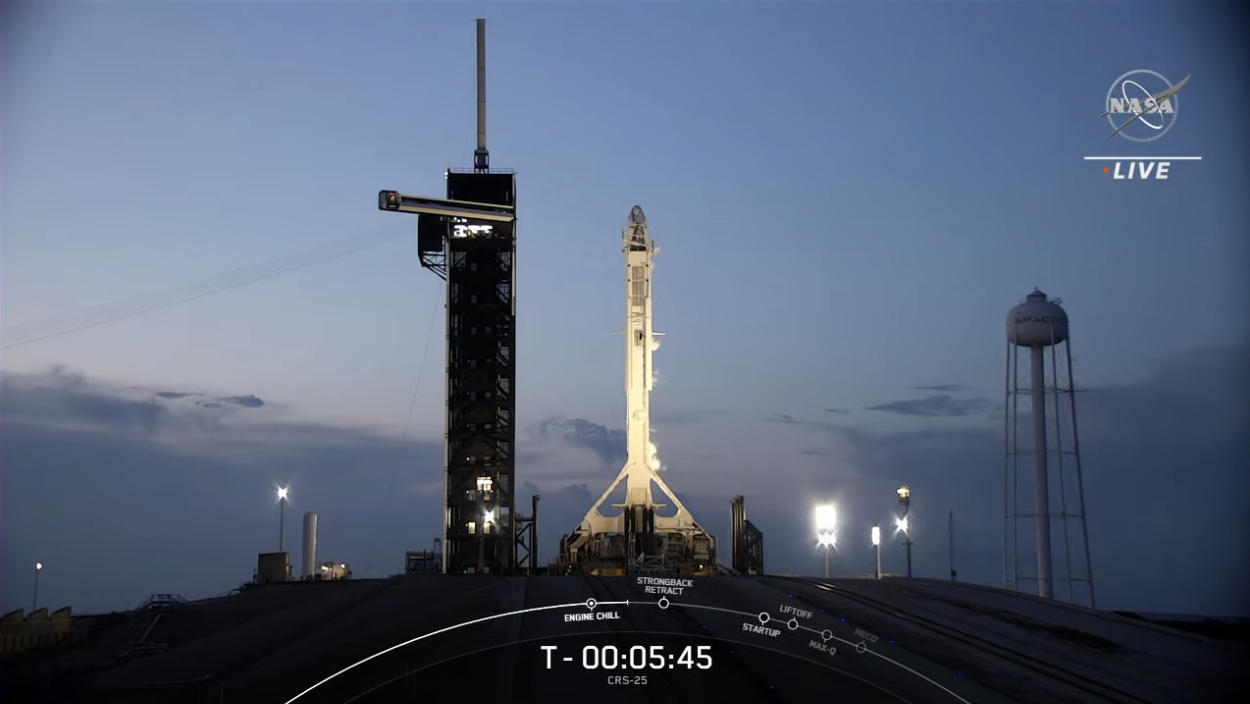
After what ISS Deputy Program Manager Dana Weigel called “a good, clean Launch Readiness Review”, earlier this week, the 230-foot-tall (70-meter) Falcon 9 was transported to Pad 39A on Tuesday, 12 July, and elevated to the vertical. Its first-stage core—tailnumbered “B1067”—had already flown four times, having previously delivered the CRS-22 Cargo Dragon to the ISS in June 2021 and launched Turkey’s powerful Türksat 5B communications satellite on the first leg of its long trek to geostationary orbit the following December. It also sent eight humans from the United States, Germany and Italy to the ISS on last November’s Crew-3 and last April’s Crew-4.
All four prior missions terminated with smooth touchdowns on the deck of the Autonomous Spaceport Drone Ship (ASDS). And last night’s CRS-25 flight was expected to prove no exception, as the newest ASDS of the fleet, “A Shortfall of Gravitas”, put to sea out of Port Canaveral on Tuesday, bound for a position about 190 miles (300 kilometers) downrange in the Atlantic Ocean.
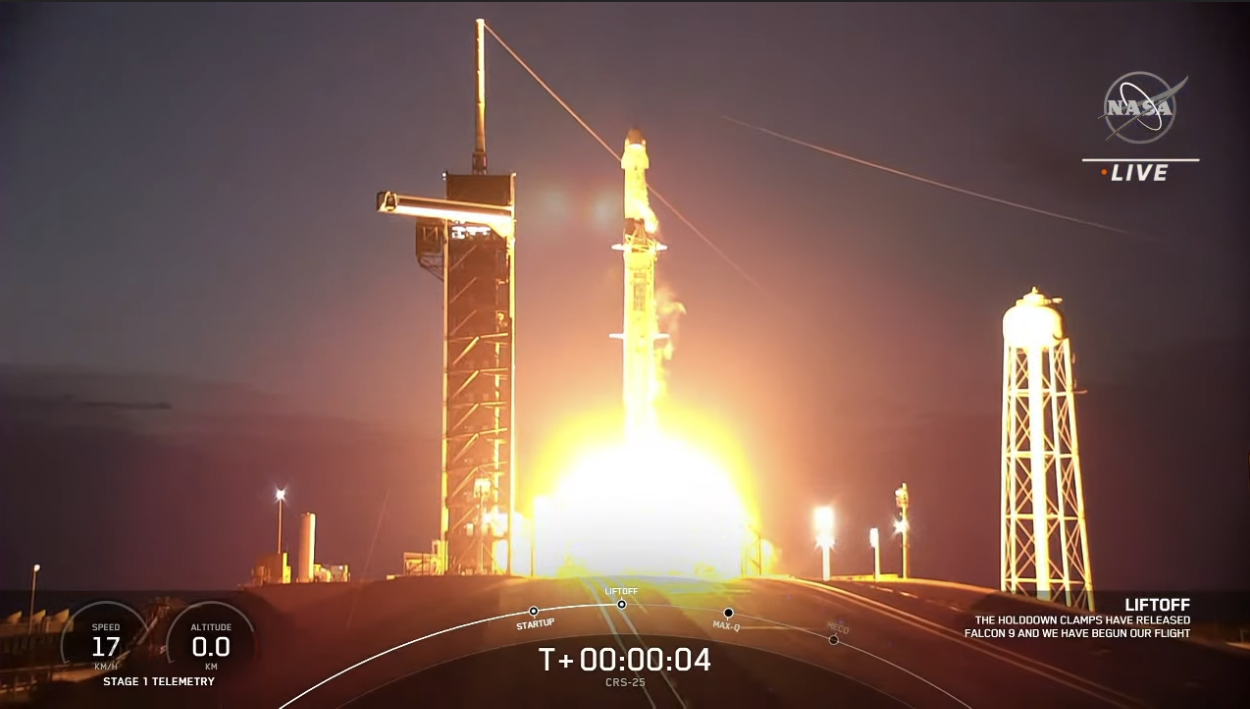
Weather conditions for Thursday night’s launch hovered around 70-percent-favorable, tempered by the possibility of isolated showers and a chance of violating the Cumulus Cloud Rule and Flight Through Precipitation Rule. But with conditions expected to dip to just 60 percent on Friday and Saturday, SpaceX pressed with gusto into its launch campaign and B1067 smoothly took flight for the fifth time at 8:44 p.m.
Two-and-a-half minutes later, she separated from the stack and commenced her graceful descent back to a pinpoint landing on the deck of ASOG. With the core stage gone, the Falcon 9’s second stage picked up the baton with a six-minute “burn” to deliver CRS-25 into space. Three minutes after its single Merlin 1D+ Vacuum engine fell silent, a little less than 12 minutes after leaving the Space Coast, the Cargo Dragon separated from the second stage and disappeared into the inky blackness, her sights set on the ISS.
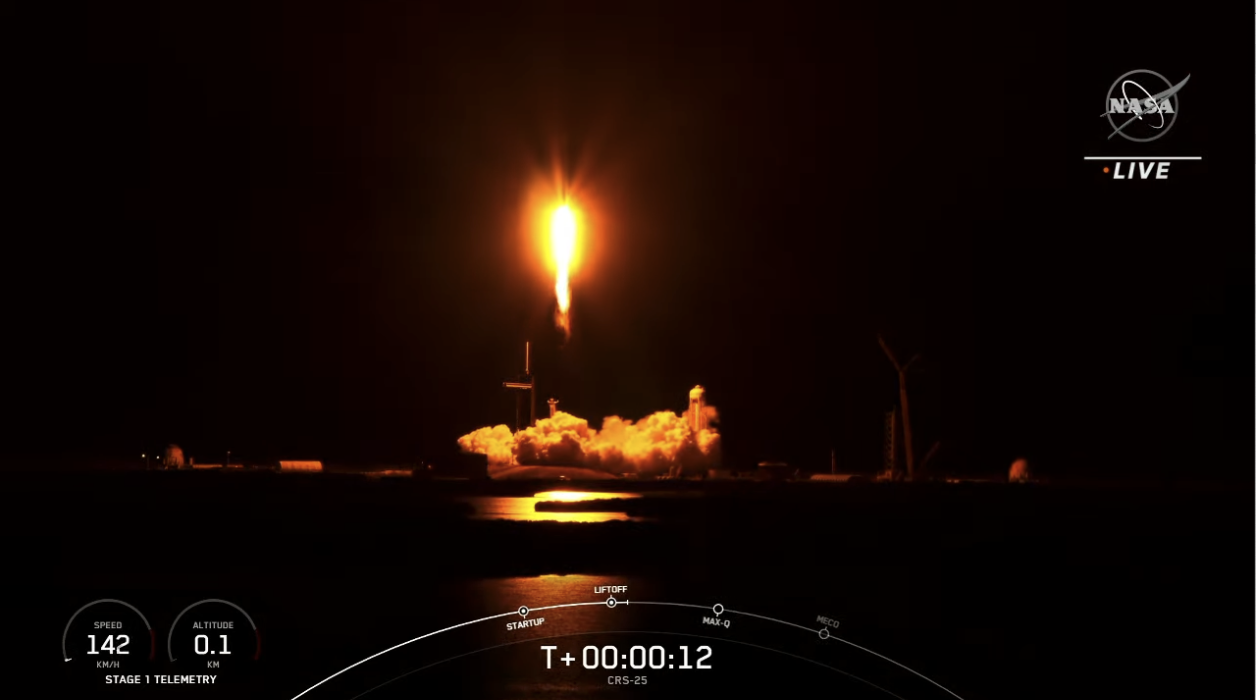
CRS-25 is expected to perform a wholly autonomous rendezvous and docking at the forward-facing port of the station’s Harmony node at 11:20 a.m. EDT Saturday, some 39 hours after liftoff. Unlike the first-generation Cargo Dragons—which flew 20 missions between May 2012 and March 2020 and were robotically “berthed” at the ISS using the station’s Canadarm2—their second-generation cousins, of which CRS-25 is one, are designed to dock autonomously, with minimal crew oversight.
That said, Expedition 67 astronauts Jessica Watkins and Bob “Farmer” Hines will be on duty early Saturday morning in the station’s multi-windowed cupola to monitor the rendezvous and step in and execute manual commanding if needed. The pair spent time earlier this week on Computer-Based Training (CBT) for their tasks. They also worked closely with crewmate Kjell Lindgren to “stage” hardware that will be returned to Earth aboard CRS-25 in mid-August.
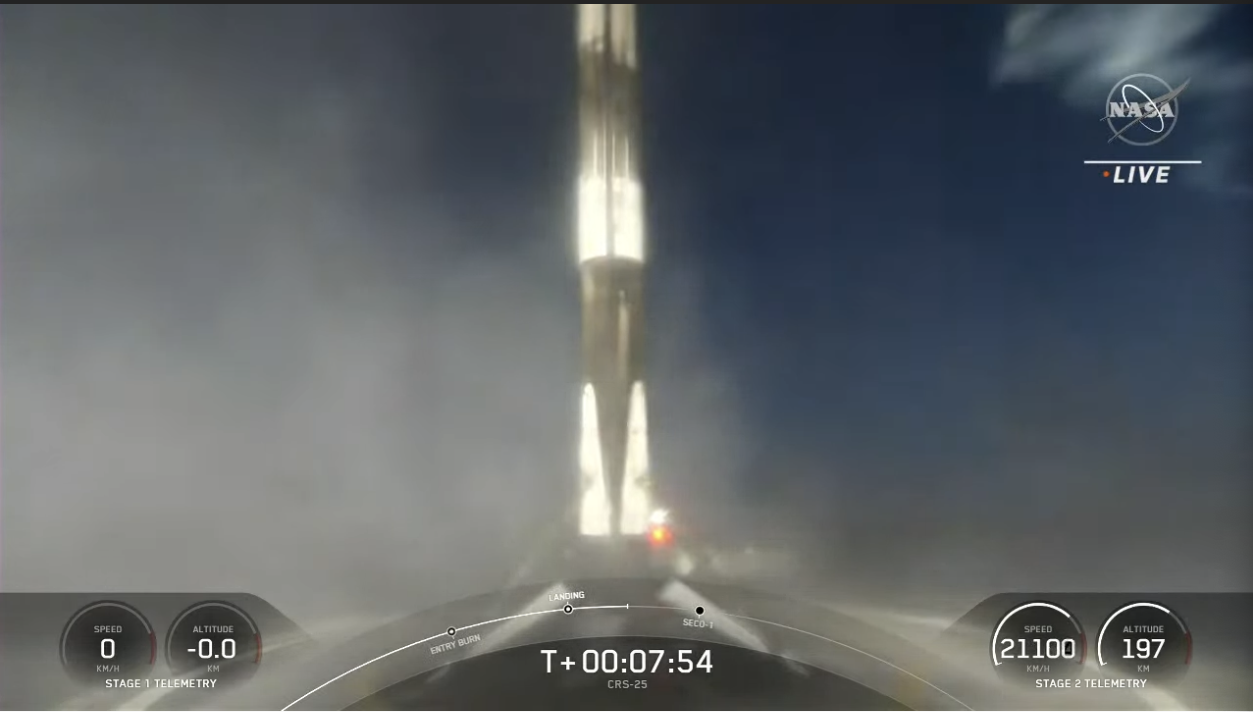
One critical piece of hardware returning home will be the Extravehicular Mobility Unit (EMU) suit used in March by German spacewalker Matthias Maurer on U.S. EVA-80. Following the completion of that Extravehicular Activity (EVA), water was found to cover up to half of Maurer’s helmet face plate and the Helmet Absorption Pad (HAP), added after a serious water intrusion incident during U.S. EVA-23 in July 2013 was found to be damp. “Planned” U.S. EVAs were put in indefinite hold as teams dug into the problem and the return of Maurer’s suit to Earth will form a key pillar of the investigation.
At present, two U.S. EVAs are provisionally penciled-in for the August timeframe to prepare for the installation of future ISS Roll-Out Solar Array (iROSA) hardware. Whether those EVAs will go ahead or be moved back until after the planned September 2022 return of Crew-4 remains to be seen. The next Cargo Dragon mission, CRS-26, planned for later this fall, is expected to deliver the next set of iROSA arrays.
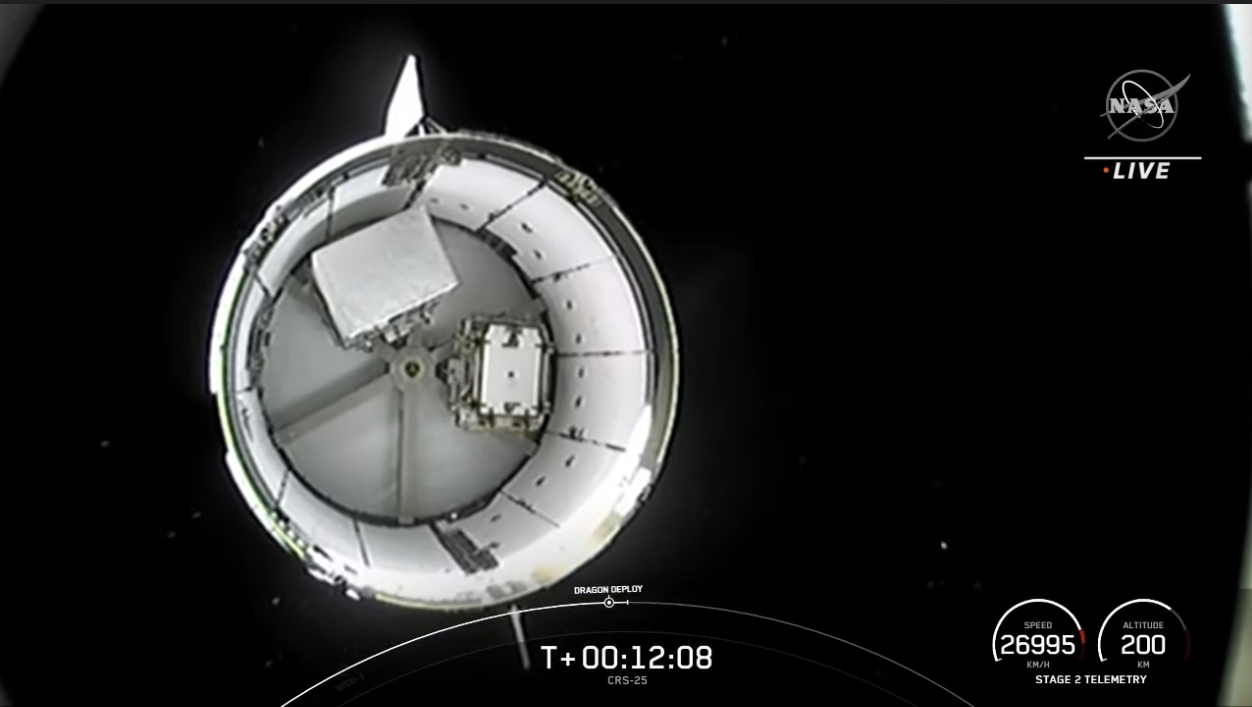
As outlined in yesterday’s AmericaSpace article, CRS-25 is lifting around 5,800 pounds (2,600 kilograms) of equipment, payloads and crew supplies to the ISS. According to ISS Program Associate Scientist Heidi Parris, speaking at Wednesday’s pre-launch press conference, research hardware supporting up to 40 investigations headed uphill on CRS-25 and samples from another 50 experiments will return home next month. Current plans are for this mission to run about 33 days, producing a return to Earth on 16 August.
And two weeks after CRS-25’s return, teams will position themselves for the next Crew Dragon mission to the station—Crew-5—currently set to fly at the beginning of September. NASA astronauts Nicole Mann and Josh Cassada were assigned to command and pilot this mission last fall and will be joined by veteran Japan Aerospace Exploration Agency (JAXA) astronaut Koichi Wakata, who will command Expedition 68.
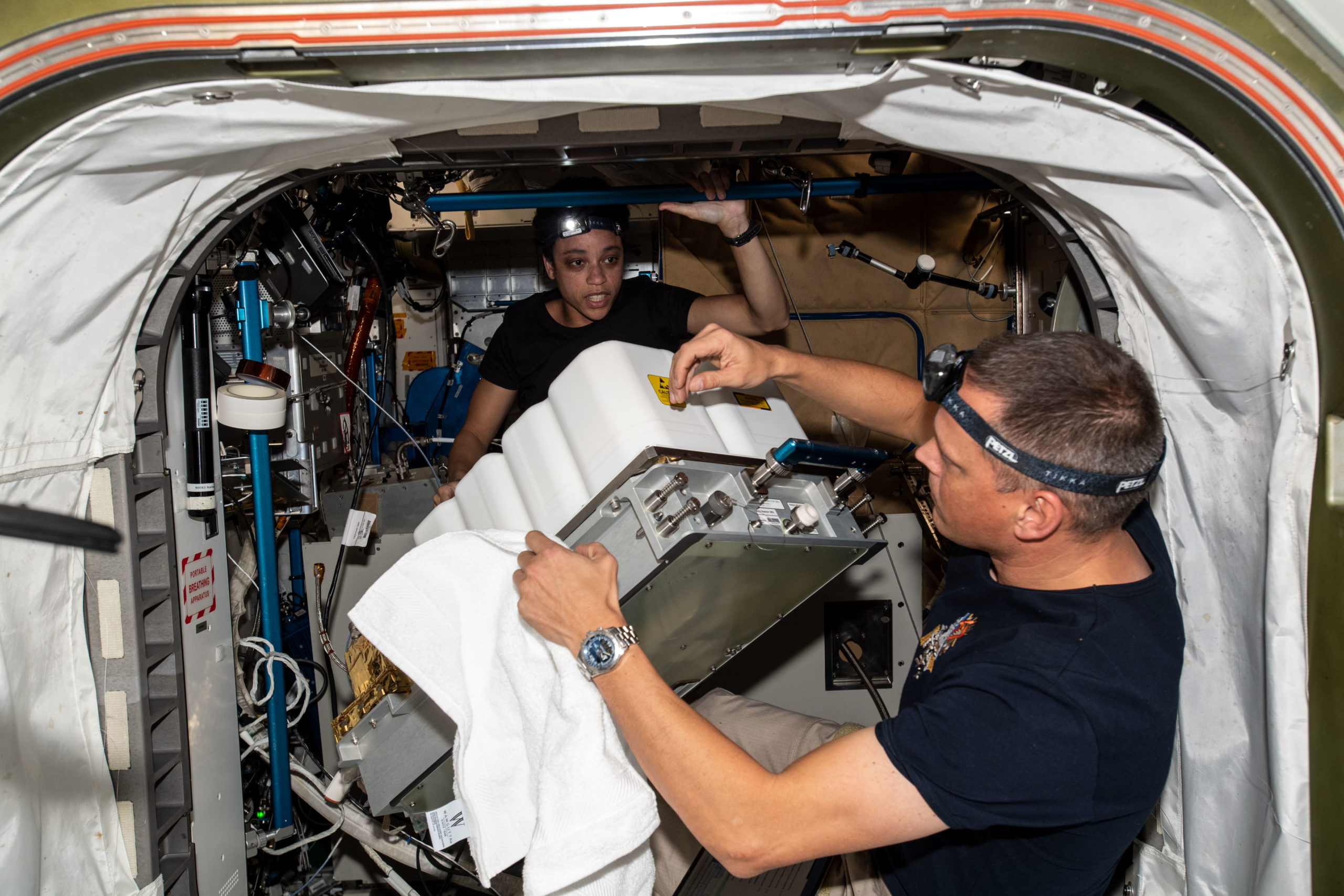
But the fourth member of Crew-5 is still unconfirmed. Hopes for a “seat-swap” between the NASA and Roscosmos had already seen cosmonaut Anna Kikina train alongside Mann, Cassada and Wakata, whilst U.S. astronaut Frank Rubio has trained with cosmonauts Sergei Prokopyev and Dmitri Petelin for the Soyuz MS-22 mission in September.
But with U.S./Russian relations at their lowest possible ebb, following President Vladimir Putin’s invasion of Ukraine—a situation not helped in recent months by increasingly bellicose rhetoric from the head of Roscosmos, Dmitri Rogozin—it remains to be seen if the seat swap will go ahead. Speaking on Wednesday, Ms. Weigel stressed that “hard trades” will need to be made by the end of next week as the crews enter their final phase of training.




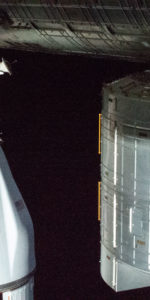
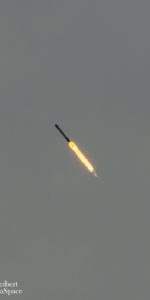
4 Comments
4 Pings & Trackbacks
Pingback:Crew-5 Targets 29 September Launch, Second Flight for Dragon Endurance - isbiu news media
Pingback:SpaceX Flies 3,000th Starlink in Sunset Falcon 9 Launch - AmericaSpace
Pingback:CRS-25 Departs Space Station, Homeward Bound After Month-Long Stay - AmericaSpace
Pingback:SpaceX’s Third Falcon 9 of September Launches at Sixth Attempt - AmericaSpace